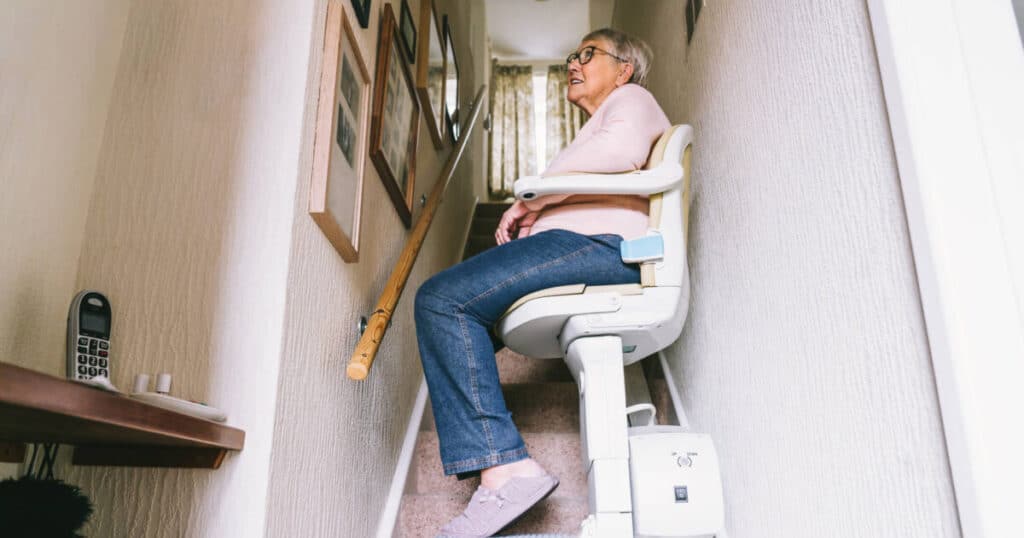Home Fixes and Renovations for Aging in Place Safely
If aging in place at home is your long-term goal, it’s never too early to think about how to make your home safer and more accessible. Even if you don’t need to worry about safety now, there will come a time when getting around becomes a challenge not only to your safety but to your happiness as well. The following are some of the most common and necessary home fixes and renovations you should consider.
Home fixes and renovations for aging in place safely
Decluttering
One of the easiest fixes is eliminating clutter. You are probably aware how hoarding items can make a home messy and dangerous. Clutter, even on a smaller scale, can be dangerous – contributing to trips and falls. Clutter may also be a sign of more insidious problems like depression and other concerns described in Australian and New Zealand Mental Health Association’s blog post The Link Between Clutter & Your Mental Health.
If you have accumulating piles, heaps and stacks of everything – magazines, clothing and memorabilia – it might be because you find cleaning, lifting and decluttering more difficult as you age. Rather than tackling it alone, ask your family to lend a hand with the heavy tasks. You will quickly see decluttering can make a world of difference to aging in place safely. For a thorough look at how to declutter for aging in place at home, check out Senior Safety Advice’s Decluttering Tips for Seniors.
Non-structural changes
Once decluttering is complete you will be able to see where simple changes can make aging in place safer. Starting with the floor, remove throw rugs and make sure flooring and carpets are even and secure, especially on steps. Next, consider rearranging furniture so spaces are more open. It may be necessary to remove furniture that’s blocking walkways or makes navigating through a room difficult.
Lighting is another area that is easy to upgrade. Relocating lamps, changing to window treatments that let in natural light and adding strip lighting in areas without windows make a huge difference. Another great idea is to use smart light fixtures and bulbs, like those described in the EnergyStar’s Smart Home Tips for Saving Energy. Some can be operated by voice or using a cell phone app.
Bathrooms and kitchens can also be made safer for aging in place with basic additions and modifications that don’t cost much. In bathrooms, grab bars in the shower and by the toilet can be installed, elevated toilets can replace standard versions or a toilet seat riser can be added to standard version and non-slip stickers on the tub/shower’s floor, a hand-held shower head and a shower chair can be added.
In the kitchen, relocate your microwave to a lower level to decrease the chance of spills and burns and add roll-out shelves in cupboards and pantries, and lighting under cabinets, over the stove, and in other areas where you prepare meals. You may also consider changing from a gas or traditional electric stove to an induction cooktop, which McKnight’s Long-term Care News’ Safer Cooking Options for Seniors in Assisted Living notes can not only lower the risk of burns and fires, but cooks faster, uses less energy and is easier to clean.
In both bathrooms and kitchens, changing knob handled faucets to lever handled faucets is another easy solution for making aging in place safer.
Structural renovations
If your family home is multi-level and older, structural renovations are likely needed for aging in place safely. For example, installing a stair lift, for getting up and down stairs, and ramps, for navigating fewer steps in and outdoors. Doorways and hallways will likely need widening to accommodate a wheelchair or walker for accessing living spaces. Area rugs will need to be replaced with carpeting or hard flooring.
In your bathroom, replacing a tub with a walk-in shower that can accommodate a wheelchair or shower chair is a top renovation project for aging in place. Other common changes include in-shower lighting and non-slip flooring.
If a new kitchen is on your renovation list, choose lower counters and cupboards, non-slip flooring, work space lighting and more innovations like those detailed in AgingInPlace’s Kitchen Of The Future: Remodeling For Comfortable Aging In Place.
Although your home may have always been safe, it may not be safe for aging in place. However, with modifications – some less costly than others – you’ll have a better success for aging in place at your home. For more information on the subject, including renovation cost estimates, read our How Safe is Your Home for Aging in Place blog post.
If the costs are too great and the work is too much hassle, consider moving to a senior living community, which is designed for aging. With some residents using wheelchairs or walkers, residences offer wide open spaces. Ample lighting is prominent throughout the community – accessing natural or artificial lighting sources. Similar to the bathroom modification recommendations, bathrooms feature walk-in showers, grab bars, elevated toilets and slip resistant flooring. Emergency systems are also accessible throughout the community, and residents are provided with emergency pendants.
Learn more in our free Senior Living Options Guide.





